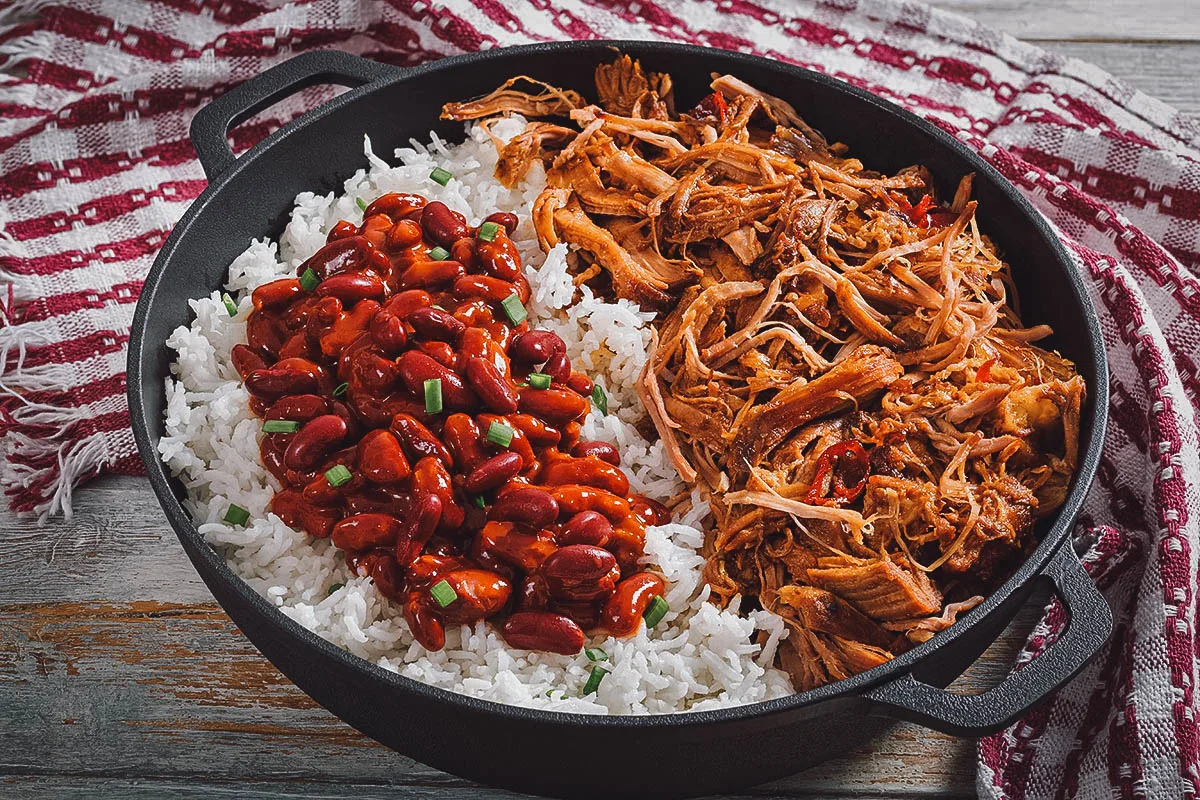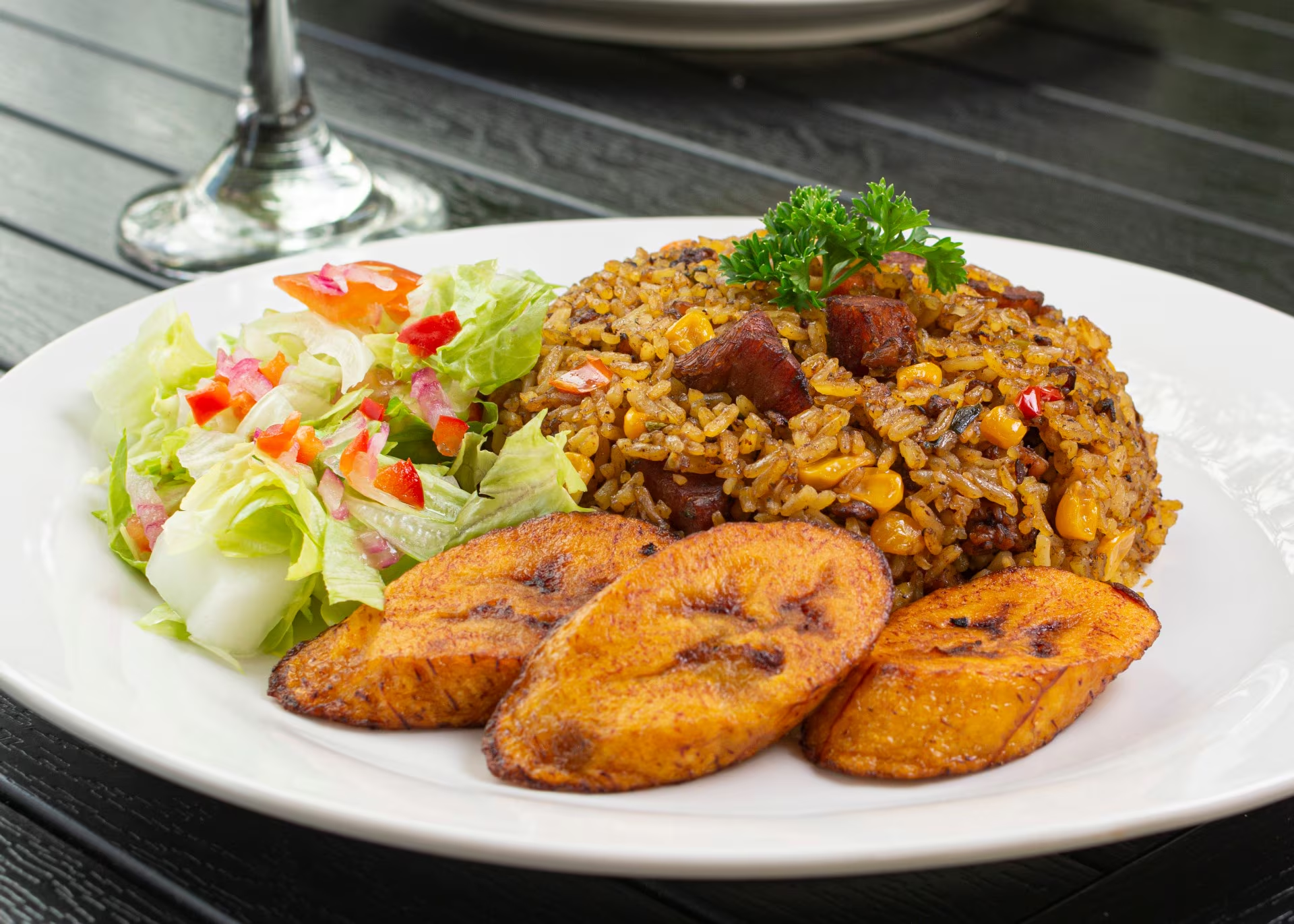Dominican republic conventional meals – Immerse your self within the vibrant flavors and cultural tapestry of the Dominican Republic’s conventional delicacies, the place every dish is a testomony to the nation’s wealthy historical past and culinary heritage. This tantalizing exploration delves into the center of Dominican gastronomy, uncovering the culinary traditions which have formed a nation’s palate.
From the colourful streets of Santo Domingo to the plush countryside, Dominican delicacies is a symphony of flavors, textures, and aromas. Uncover the frequent elements that kind the muse of Dominican cooking and savor the delectable dishes which have turn into beloved by locals and guests alike.
Put together to embark on a culinary journey that can go away your style buds dancing and your coronary heart full of a newfound appreciation for the Dominican Republic’s culinary treasures.
Introduction

Conventional Dominican Republic meals is a mirrored image of the nation’s wealthy historical past and tradition. It’s a mix of Spanish, African, and Taino influences, creating a singular and flavorful delicacies.
Dominican meals is a necessary a part of the nation’s cultural id. It’s a approach for Dominicans to attach with their heritage and to have fun their traditions.
Significance of Conventional Meals
Conventional Dominican meals performs a big function within the nation’s tradition. It’s a approach for Dominicans to attach with their heritage and to have fun their traditions.
- La Bandera, the nationwide dish of the Dominican Republic, is an emblem of the nation’s delight and independence.
- Sancocho, a hearty stew, is a well-liked dish that’s usually served at particular events.
- Mangu, a mashed plantain dish, is a staple meals within the Dominican Republic.
Widespread Elements and Dishes
Conventional Dominican delicacies is a vibrant mix of Spanish, African, and Taíno influences, leading to a singular and flavorful culinary expertise. The dishes are sometimes characterised by their use of contemporary, native elements and daring seasonings.
Among the most typical elements utilized in Dominican cooking embrace:
- Rice
- Beans
- Meat (rooster, pork, beef)
- Seafood
- Greens (onions, garlic, tomatoes, peppers)
- Fruits (mangoes, papayas, bananas)
- Spices (oregano, cumin, cilantro)
Standard conventional dishes embrace:
La Bandera Dominicana
La Bandera Dominicana is the nationwide dish of the Dominican Republic. It consists of white rice, crimson beans, and stewed meat (often rooster or beef). The dish is usually served with a aspect of fried plantains or yuca.
Sancocho
Sancocho is a hearty stew made with meat, greens, and beans. It’s usually cooked over an open fireplace and is a well-liked dish for particular events.
Mofongo
Mofongo is a mashed plantain dish that’s usually served with meat or seafood. It’s a fashionable aspect dish or fundamental course.
Habichuelas con Dulce
Habichuelas con Dulce is a candy bean dish that’s usually served as a dessert. It’s made with crimson beans, sugar, and spices.
Regional Variations

Dominican delicacies displays regional variations on account of geographical components and native traditions. The nation’s various panorama, with coastal areas, mountainous areas, and fertile valleys, influences the provision of elements and cooking strategies.
Coastal Areas
Coastal areas, equivalent to Punta Cana and Puerto Plata, have a powerful seafood affect. Recent fish, shrimp, and lobster are frequent elements, usually grilled or stewed in coconut milk. Native spices, equivalent to oregano and thyme, add taste to seafood dishes.
Mountainous Areas, Dominican republic conventional meals
Within the mountainous areas, equivalent to Jarabacoa and Constanza, cooler temperatures and better altitudes have an effect on the delicacies. Root greens, equivalent to yucca, potatoes, and plantains, are staple elements. Meat dishes, equivalent to roasted rooster or stewed pork, are additionally fashionable.
Central Valley
The fertile Central Valley, together with Santo Domingo, is understood for its agricultural merchandise. Fruits, greens, and rice are extensively cultivated, offering a various vary of elements. Conventional dishes embrace rice with beans (arroz con habichuelas), stews, and soups made with native produce.
Cultural Influences

Dominican delicacies is a vibrant mix of culinary traditions introduced by totally different cultural teams over centuries. It has been closely influenced by Spanish, African, and indigenous cultures, every leaving a singular mark on the flavors and dishes loved within the Dominican Republic at this time.
Spanish Affect
Spanish colonizers launched a spread of elements and cooking methods to the Dominican Republic, together with olive oil, garlic, onions, tomatoes, and rice. Additionally they introduced the custom of stews, soups, and fried dishes, which grew to become staples in Dominican delicacies. Using spices like cumin, oregano, and bay leaves additional enriched the flavors of Dominican dishes.
African Affect
The arrival of enslaved Africans within the Dominican Republic introduced with them their very own culinary traditions and elements. They launched plantains, yuca, and okra, which grew to become important elements of many Dominican dishes. African cooking methods, equivalent to grilling and smoking, additionally influenced the event of Dominican delicacies.
Indigenous Affect
The indigenous Taíno individuals of the Dominican Republic contributed to the nation’s culinary heritage by introducing cassava, beans, and corn. Additionally they used conventional strategies of cooking, equivalent to boiling and roasting, that are nonetheless employed in some Dominican dishes at this time.The
fusion of those cultural influences has created a wealthy and various culinary panorama within the Dominican Republic, the place dishes mix the flavors and traditions of various cultures to create a singular and unforgettable eating expertise.
Cooking Strategies: Dominican Republic Conventional Meals
Dominican delicacies makes use of conventional cooking strategies which were handed down by means of generations, contributing to the distinctive flavors and authenticity of its dishes.
One of the crucial prevalent methods is guisar, a slow-cooking methodology involving simmering meat or greens in a flavorful sauce or broth. This methodology permits the elements to soak up the flavors and develop a wealthy, advanced style.
Frying
Frying is one other frequent cooking methodology, used for each savory and candy dishes. Dominican delicacies options quite a lot of fried objects, equivalent to mangu(fried mashed plantains), chicharrón(fried pork stomach), and tostones(twice-fried plantains).
Eating Customs
Eating within the Dominican Republic is a social event, with meals usually being shared with household and mates. There are specific eating customs and etiquette which are adopted, which contribute to the general eating expertise.
The everyday eating schedule within the Dominican Republic consists of breakfast, lunch, and dinner. Breakfast is often served early, round 7-8 am, and sometimes consists of sunshine fare equivalent to fruit, eggs, or bread. Lunch is the primary meal of the day and is often served between 12-2 pm.
It often consists of a hearty dish, equivalent to rice, beans, and meat, accompanied by aspect dishes like salad or greens.
Desk Manners
Desk manners within the Dominican Republic are typically well mannered and respectful. It’s thought of good manners to reach on time for meals, as punctuality is valued. When consuming, it’s customary to maintain each palms on the desk, and to eat slowly and intentionally.
Additionally it is thought of well mannered to attend till everybody on the desk has been served earlier than starting to eat.
Social Interactions
Eating within the Dominican Republic is a social event, and it’s common for individuals to have interaction in dialog whereas consuming. It’s thought of well mannered to ask concerning the well-being of others on the desk, and to share tales and experiences.
Additionally it is frequent to go with the meals and to thank the host for the meal.
Well being and Dietary Worth
Conventional Dominican meals is wealthy in vitamins and presents a number of well being advantages. It’s a good supply of advanced carbohydrates, proteins, and wholesome fat, offering sustained vitality and satiety.
Dietary Worth
- Carbohydrates:Rice, beans, and plantains are staple carbohydrates in Dominican delicacies. They supply vitality and fiber, which is crucial for digestive well being.
- Proteins:Beans, meat, and eggs are wonderful sources of protein. Protein is essential for constructing and repairing tissues, producing enzymes, and supporting immune perform.
- Fat:Dominican meals usually consists of olive oil, avocados, and nuts, that are sources of wholesome fat. These fat assist coronary heart well being, cut back irritation, and supply vitality.
- Nutritional vitamins and Minerals:Fruits, greens, and beans in Dominican dishes are wealthy in nutritional vitamins and minerals, together with vitamin C, potassium, iron, and calcium. These vitamins are important for general well being and well-being.
Well being Advantages
Consuming conventional Dominican meals can have a number of well being advantages:
- Lowered danger of coronary heart illness:Wholesome fat, fiber, and antioxidants in Dominican meals might assist cut back the danger of coronary heart illness by reducing levels of cholesterol and enhancing blood circulation.
- Improved digestion:The fiber in beans, plantains, and greens promotes common bowel actions and helps a wholesome digestive system.
- Stronger bones:Calcium-rich meals like beans and milk may help keep robust and wholesome bones.
- Boosted immune perform:Nutritional vitamins and minerals in Dominican meals, equivalent to vitamin C and iron, assist the immune system and defend towards infections.
Considerations
Whereas conventional Dominican meals is usually wholesome, some dishes will be excessive in sodium and saturated fats. Extreme consumption of those dishes might enhance the danger of hypertension and coronary heart illness.
Moreover, some individuals might expertise digestive points when consuming giant quantities of beans or fiber. It’s endorsed to steadily enhance the consumption of those meals to reduce any discomfort.
Question Decision
What’s the nationwide dish of the Dominican Republic?
The nationwide dish of the Dominican Republic is La Bandera Dominicana, which consists of rice, beans, and meat.
What are some fashionable Dominican aspect dishes?
Standard Dominican aspect dishes embrace tostones (fried plantains), mofongo (mashed plantains with garlic and pork rinds), and yuca fries.
What are some frequent elements utilized in Dominican cooking?
Widespread elements utilized in Dominican cooking embrace rice, beans, plantains, meat, seafood, onions, garlic, peppers, and cilantro.
